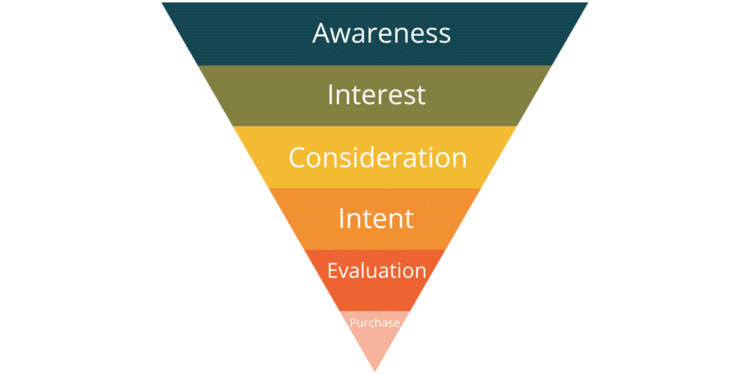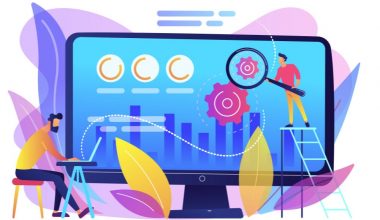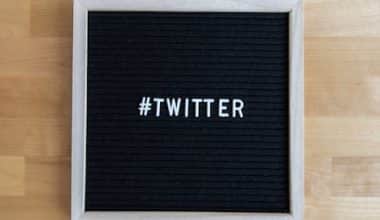I recall the moment when our team finally solved the code for creating a strong brand funnel. It had been challenging to convert brand awareness into measurable conversions. It wasn’t until we took a step back, reviewed our data, and adopted a complete approach for each stage of the funnel that we noticed significant changes. Building a great brand funnel is more than just pushing content; it’s about understanding your audience at every stage and guiding them on a journey that converts curiosity into loyalty. In this post, we will cover methods for each stage of the brand funnel, supported with facts and insights that you may not find elsewhere.
What is the Brand Funnel?
A brand funnel depicts a customer’s route to brand loyalty. Brand funnels show the progression from first awareness to purchase and advocacy. A brand funnel includes the following steps:
- Awareness
- Consideration
- Conversion
- Loyalty
- Advocacy
Why Building a Strong Brand Funnel is Important
Building a solid brand funnel is critical because it guarantees that every connection a potential customer has with your brand is purposeful and leads to a purchase. According to a McKinsey study, businesses with a well-defined brand funnel see 2.5 times higher revenue growth than those without. This excellent number emphasizes the need to follow a disciplined process to guide potential clients from initial awareness to ultimate conversion and beyond.
#1. Improved Customer Journey
A good brand funnel improves the consumer experience by offering a clear, structured path from initial engagement to point of purchase and beyond. It aids in determining where potential clients are in the buying process and adapting your communication accordingly. This tailored strategy enhances conversion rates and creates a more engaged and loyal consumer base.
#2. Improved Marketing Efficiency
Your marketing efforts will be more efficient if you have a clearly defined brand funnel. Understanding which stage of the funnel your potential consumers are in allows you to generate tailored content and campaigns that meet their individual needs and worries. This not only saves time and costs but also makes your marketing communications more relevant and effective.
According to HubSpot, businesses that nurture leads through a structured funnel generate 50% more revenue at a 33% cheaper cost.
#3. Improved Alignment Between Sales and Marketing
A powerful brand funnel coordinates the work of your sales and marketing teams. With distinct stages and objectives, both teams can collaborate smoothly to move prospects through the funnel. Marketing may concentrate on producing and nurturing prospects, whilst sales can concentrate on turning those leads into customers.
Marketo research shows that firms with linked sales and marketing teams increase marketing income by 208%.
#4. Increased customer retention and loyalty
A well-structured brand funnel doesn’t end with conversion. It also contains stages aimed at consumer retention and loyalty. By engaging with clients beyond their initial purchase, you may foster long-term connections that inspire repeat business and brand advocacy.
According to Bain & Company, boosting client retention rates by 5% boosts profitability by 25% to 95 percent.
#5. Data-Driven Decision Making
A well-defined brand funnel enables more accurate tracking and analysis of customer behavior and campaign performance. Collecting and analyzing data at each stage of the funnel can provide useful insights into what works and what does not. This data-driven strategy allows you to make informed decisions and continuously improve your marketing efforts to get greater results.
McKinsey found that data-driven firms are 23 times more likely to acquire consumers and 19 times more likely to be profitable.
#6: Consistent Brand Messaging
A structured brand funnel ensures that your messaging remains consistent across all touchpoints. Consistency in communicating helps to establish trust and credibility with your audience. It reinforces your brand’s values and guarantees that your potential customers receive a consistent and coherent message, no matter where they are in their journey.
Lucidpress discovered that consistent brand presentation can improve sales by up to 23%.
How To Create an Effective Brand Funnel
Here’s how to build a robust funnel that produces results.
Stage #1. Awareness Stage: Capturing Attention
At the top of the funnel, you want to capture as many people’s attention as possible. This stage is all about visibility.
Storytelling for Awareness
When we originally tried to increase our brand’s awareness, we discovered that dry, factual content was ineffective. We required stories that resonated. Storytelling is effective because it humanizes and makes your brand more relatable.
According to a Headstream study, customers who enjoy a brand story are 55% more likely to purchase the product in the future.
Strategies for Awareness
- Content Marketing: Create compelling blog entries, infographics, and videos to tell your brand’s narrative.
- Social Media Advertising: Create tailored ads to reach a larger audience.
- SEO Optimization: Optimize your content for search engines to boost organic reach.
We began by providing behind-the-scenes stories about our team’s progress and problems. This transparency raised our social media followers by 30% in three months while also driving more people to our website.
Stage #2. Consideration: Building Interest
After capturing your audience’s attention, the next stage is to pique their interest and engage them.
Deepening Engagement
We realized that simply enticing visitors was insufficient; they needed reasons to remain and investigate more. Providing valuable, in-depth content can help keep people interested.
According to HubSpot, companies that blog generate 67% more leads than those that don’t.
Strategies for Consideration
- Educational Content: Provide webinars, thorough instructions, and white papers.
- Email Marketing: Send tailored emails with useful information.
- Social Proof: Provide testimonials, case studies, and reviews.
We created a series of webinars to address common industry concerns. The response was overwhelming—our webinar registrations climbed by 50%, and lead generation increased significantly.
Stage #3. Conversion Stage: Putting Interest into Action
This stage focuses on enticing potential clients to make a purchase.
Creating a Seamless Experience
We noticed that even minor friction in the purchasing process could dissuade potential clients. Streamlining the conversion procedure became our first goal.
According to the Baymard Institute, 69.23% of shopping carts are abandoned, usually owing to a complex checkout process.
Strategies for Conversion
- Clear CTAs: Make sure your call-to-action buttons are conspicuous and engaging.
- Simplified Checkout: Minimize the number of steps in the checkout procedure.
- Limited-Time Offers: Create a sense of urgency by offering exclusive deals.
Within one month of simplifying our checkout process and delivering a limited-time discount, our conversion rates increased by 20%.
Stage #4. Loyalty Stage: Encourages Repeat Business
After the initial purchase, it is critical to keep customers coming back.
Establishing a Connection
We discovered that staying engaged with our clients and consistently giving value was critical to building loyalty.
According to Bain & Company, boosting client retention rates by 5% boosts profitability by 25% to 95 percent.
Strategies for Loyalty
- Loyalty Programs: Offer exclusive rewards to returning clients.
- Client Service: Provide great support to ensure client satisfaction.
- Regular Updates: Keep customers informed with newsletters and product updates.
Implementing a loyalty program in which clients earned points for each transaction greatly increased our recurring business. Our retention rates increased by 15% in six months.
Stage #5. Advocacy Stage: Converting Customers to Evangelists
The final stage involves converting loyal clients into brand advocates who will promote your product.
Encourage Advocacy
We discovered that satisfied consumers may become our most effective marketers. Encouraging people to share their stories was a game changer.
According to Nielsen, 92% of customers trust recommendations from friends and family over all other forms of promotion.
Strategy for Advocacy
- Referral Programs: Encourage customers to refer friends.
- User-Generated Content: Ask customers to share their stories and experiences.
- Engagement: Use social media to connect with your audience and foster a sense of community.
Launching a referral program in which clients received discounts for suggesting friends increased both our customer base and brand loyalty. We witnessed a 25% boost in new clients via referrals.
Best Practices for Brand Funnel Surveys
Brand funnel surveys include questions regarding the many phases that lead up to current use and purchases, providing researchers with valuable insights into customer behavior. A survey, for example, could start by asking the respondents which brands they are familiar with and end by asking which ones they have recently purchased from. The question sequence may be similar to the following.
- Have you heard of any of the following soft drink brands?
- Coca Cola
- Sprite
- Pepsi
- Dr. Pepper Fanta
- None of the above.
- Which of the following soft drink brands have you considered buying from?
- Which of the following soft drink brands have you bought from?
- Which of the following soft drink brands did you purchase over the last three months?
Using similar questions, brand funnel surveys can help researchers uncover patterns in their target market. However, there are some best practices to follow when creating a brand funnel survey.
#1. Avoid Long Brand Lists
While it may be tempting to include as many brands as possible to ensure that you cover as much territory as possible, including lengthy brand lists in your surveys can be detrimental rather than beneficial. After selecting a few brands, respondents may not go through the entire list, resulting in misleading awareness estimates. Respondents may also avoid reading through all brands if they have to scroll down for an extended time.
#2. Avoid using various units of measurement
Using several units of measurement may result in inconsistencies and muddled survey data. For example, a query should not include both usage frequency and time frames. To keep the survey and data clear and easy, divide them into separate questions, such as the ones listed below.
- Keep an eye out for words such as most frequently used, major brand, favored brand, and last purchased.
- When did you last use Product A?
- What number of times have you utilized (dummy brands)?
#2. Use Dummy Brands Carefully
Dummy brands are false products that are included in the brand list to aid in the detection of overstatements and random clicking in surveys, comparable to attention checks. Using dummy brands wrongly can mistake honest respondents for survey offenders. When using dummy brands in a brand funnel survey, make sure that:
- Never use them for questions concerning ordinary, inconsequential purchases.
- Keep in mind that suspicion extends beyond mere consumption; other factors can affect awareness.
- Make sure that a dummy brand is not identical or similar to an existing brand.
- Exclude respondents who chose them from the incidence estimations.
#3. Include “None of these” and “Other” response options.
To avoid requiring respondents to choose from a multi-select list, include a “none of these” option. When using the “other” option in a question’s answer choices, make sure the use grid allows respondents to enter a different brand. Only providing the “other” answer option is insufficient because it does not allow respondents to add a brand to an awareness list.
Ready to take your brand funnel to the next level? Download our Brand Funnel Strategy Template now and start building a robust, effective funnel that drives engagement and conversions. This template will guide you through each stage, ensuring that your marketing efforts are strategic and impactful. Don’t miss out on the opportunity to enhance your brand’s presence and reach. Click the link below to get started!
Brand Funnel Strategy Template
Key takeaways
- Use narrative and targeted advertisements to attract people’s attention.
- Provide useful, instructional stuff to pique attention.
- Simplify the purchasing procedure and increase urgency.
- Set up loyalty programs and deliver excellent client service.
- Encourage referrals and user-generated content to create brand champions.
Conclusion
Building a great brand funnel is a journey that requires you to understand your audience at each stage and apply techniques that will take them from awareness to advocacy. By focusing on each stage of the funnel and consistently refining your strategy, you can build a devoted customer base that not only buys your items but also promotes your brand. What tactics have you found most beneficial in developing your brand funnel?
Related Articles
- Digital Marketing Funnel Mastery: The A-Z Training to More Sales and Subscribers
- Brand Awareness Ideas: Most Effective Ideas in 2024 (Practical Tips)
- Brand Licensing Done Right: From Concept to Consumer
- 7 Strategies for Utilizing Brand Influencer Opportunities in 2024
- 15 Famous Brand Positioning Examples to Inspire Your Brand Strategy (+ Branding Tips)






